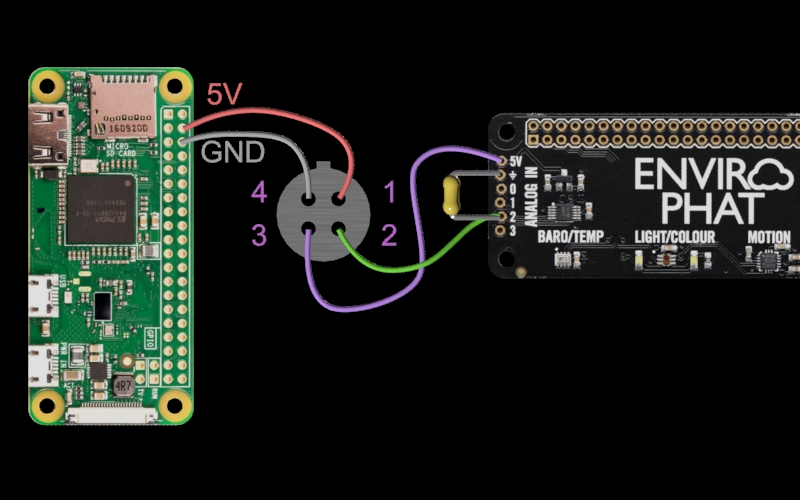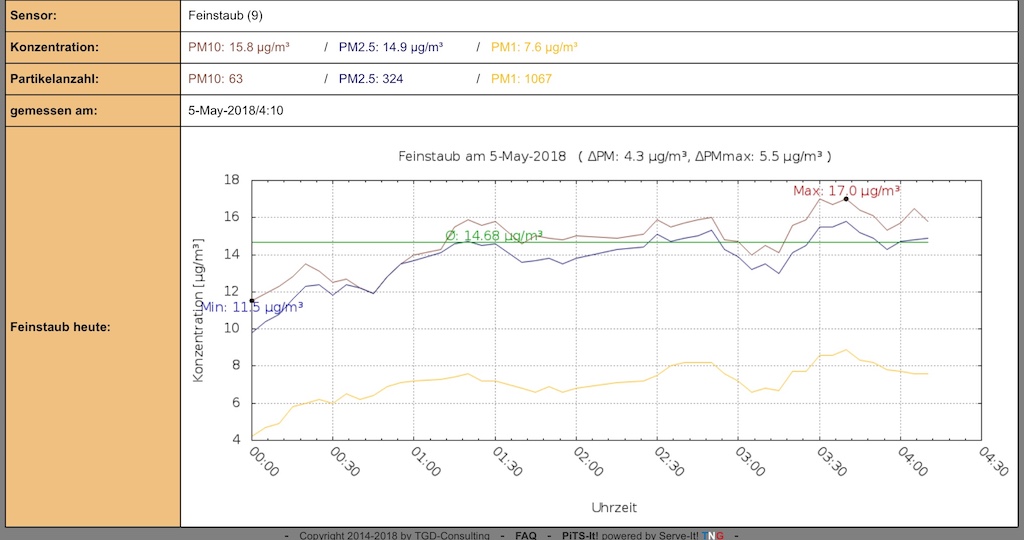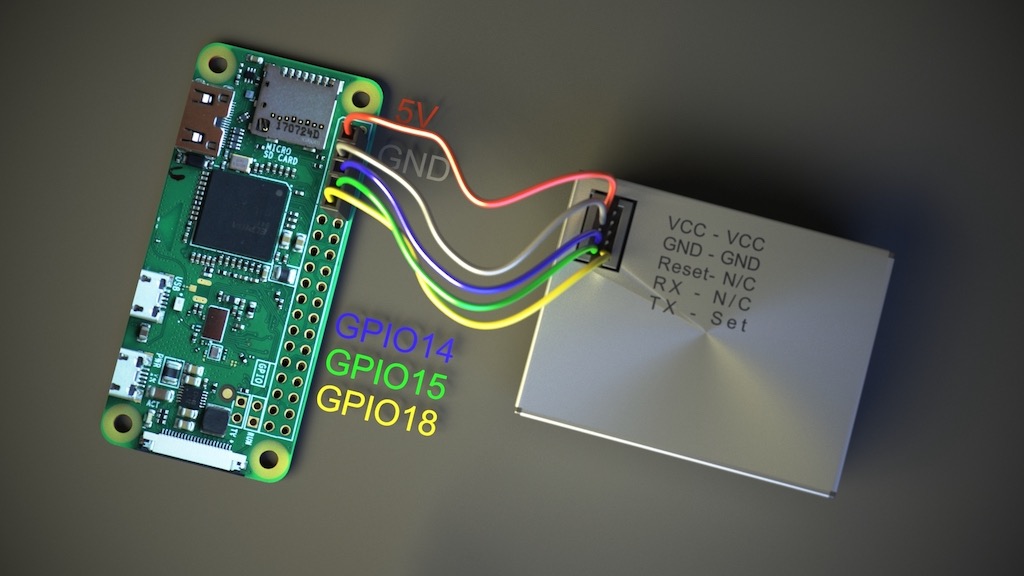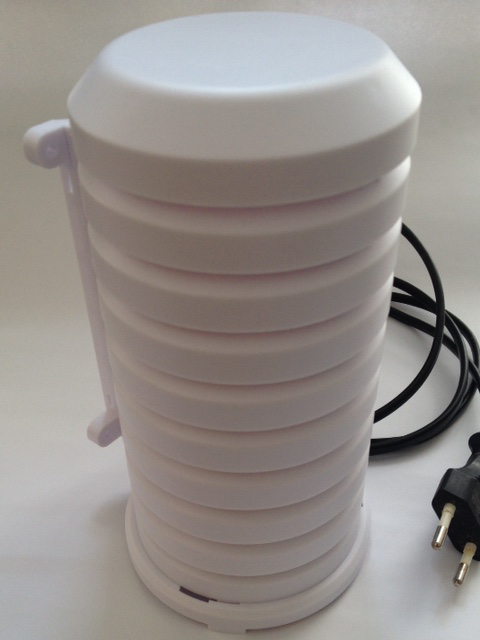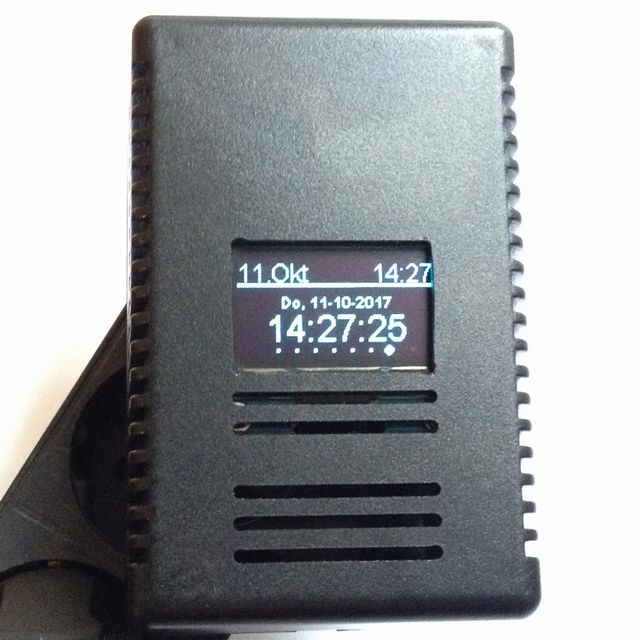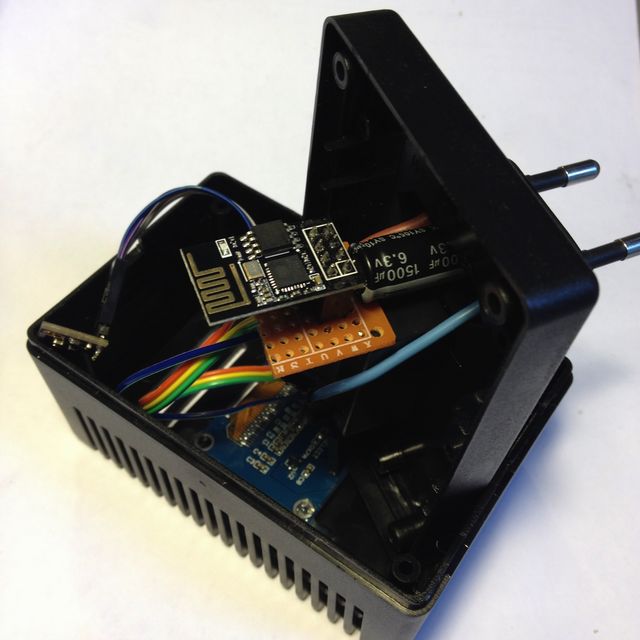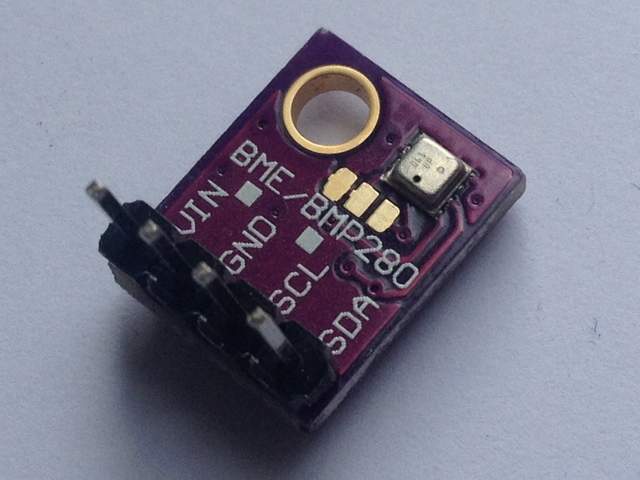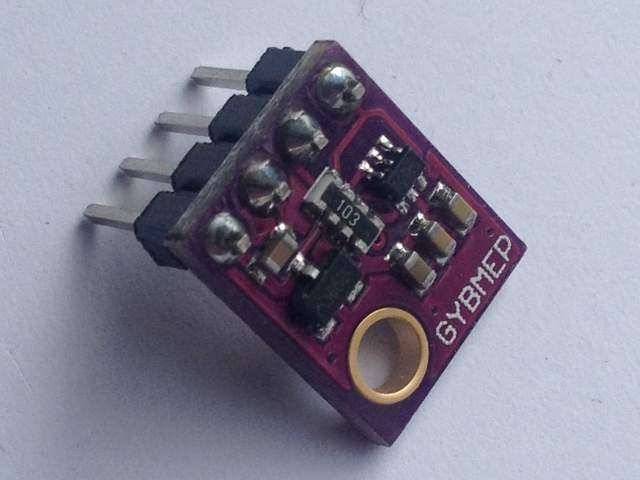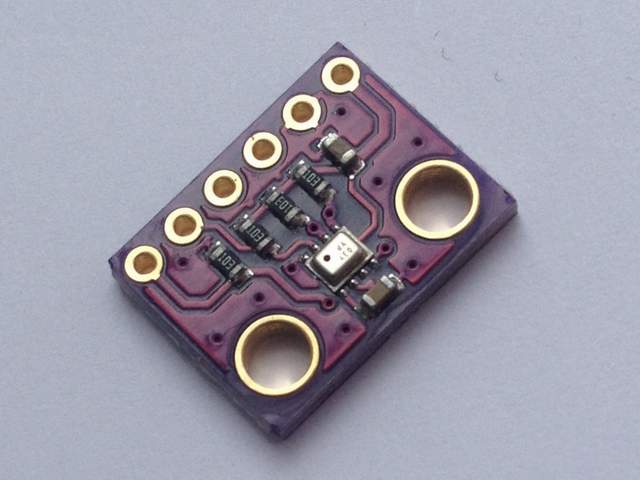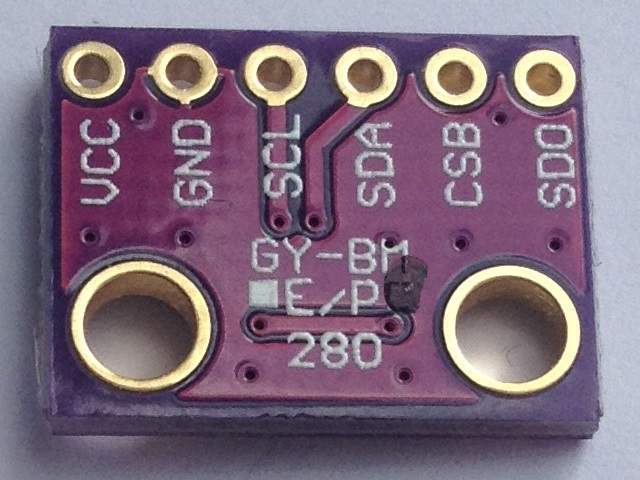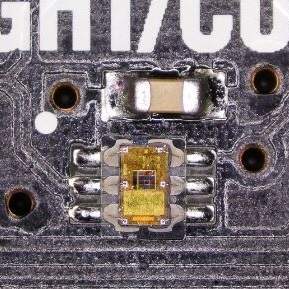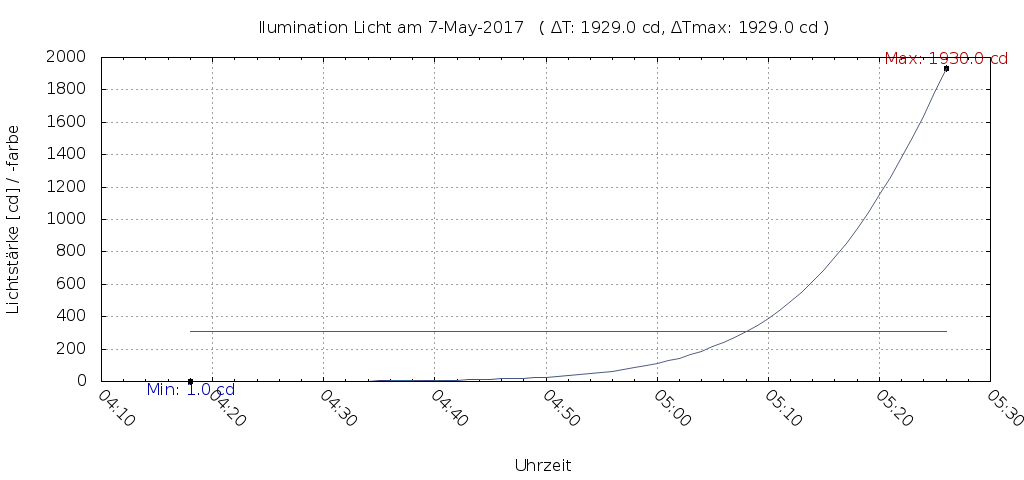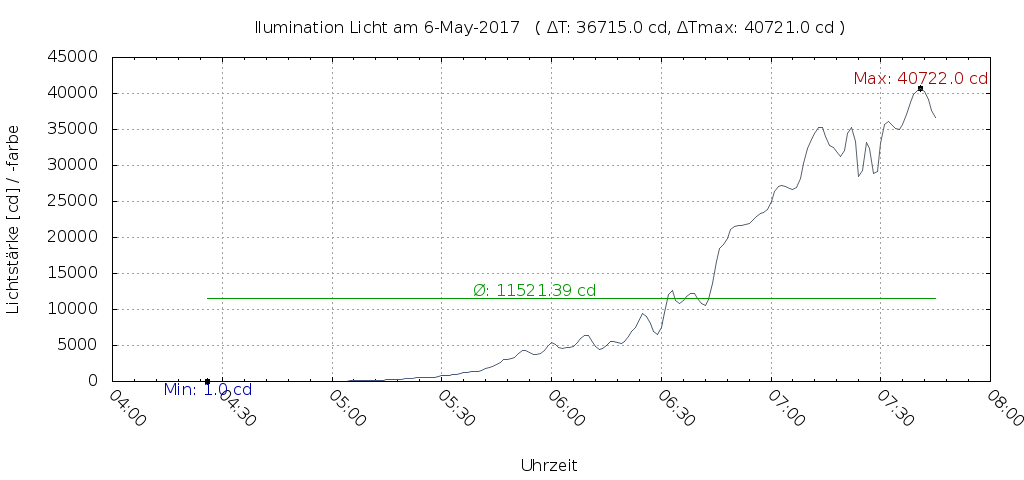| |||||||||||
PiTS - the smart π-Temperature-SentinelWelcome to the PiTS - a smart app for measuring, monitoring and displaying temperatures based on the Raspberry Pi and REBOL. You can purchase an officially licensed bundle of the "PiTS-It!" management software[1] at a price of €19,99 EUR only here. The software bundle already includes all necessary modules of the management software, which are required for a smart temperature sentinel / monitor based on the Raspberry Pi. The software works on all Raspberry Pi models. Especially with the newer Raspberry Pi 3 as well as Raspberry Pi 2 models, our software benefits from the additional computing power of the new multi-core architecture.
Please refer to the release notes to get an overview and information on the latest version of the software. The hardware shown in the following photos is used for illustrative purposes only and as an example of how PiTS looks like and how it is set up. Please purchase the required hardware from the respective manufacturers or through their sales channels. TGD-Consulting offers only IT services and software solutions. You want to make your own PiTS based on our "PiTS-It!" management software? Then purchase a license and read on to find out ... As a quick start you'll get here directly an answer to the most frequently asked questions:
More answers to questions can be found in the FAQ or at the Deutsches Raspberry Pi Forum. The term PiTS stands for π-Temperature-Sentinel and represents the extension of a common Raspberry Pi to a smart solution for measuring, monitoring and displaying temperatures. PiTS is highly versatile. It can be used either for temperature monitoring in server rooms Get to know the advantages and possibilities of the π-Temperature-Sentinel and convince yourself right here and now on the Internet of the "PiTS-It!" management software and its simple, smart operation as well as the extensive configuration options. Here you see a The system price of PiTS including all required components is between 50,- and 100,- EUR depending on the type and number of components / sensors. That figure already includes the licence costs for the "PiTS-It!" management software. The version of the PiTS shown on this page consists of the following components:
The external appearance of our PiTS prototype is characterised by the external WiFi antenna and the black PCB of the Enviro pHAT. Due to the dimensions of all assembled components, installation in the housing is somewhat cumbersome. Nevertheless, all single PiTS components can be assembled by every ambitious user with a little bit of skill. All components can be purchased directly from the Internet. The sources of supply are partly linked in the above lists. For our prototype of the PiTS we use a Raspberry Pi Zero, which is extended by the HLK-PM01 mini switch mode power supply and the sensors. In this way a modern, expandable digital weather station can be self made in a very cost-effective way to collect the desired weather data. Since splash-proof and outdoor housings for the Raspberry Pi are known to be quite expensive, it is advisable to use a suitable LED floodlight housing for a different purpose. If required, a conventional power supply unit can be used to power the Raspberry Pi instead of the miniature switched-mode power supply module. However, it is important to ensure that the extra-low voltage connection between the power supply and the Raspberry Pi is not too long to keep the voltage drop in the cable as low as possible. If the cable quality is right, there should be no problems with lengths up to one meter. Attention: If unexpected system failures occur during operation, this indicates that the power supply of the Raspberry Pi is too weak. Then replace the power supply with a stronger and more reliable one. A BME280 sensor If the measuring points for the temperatures are far from the Raspberry Pi, 1-Wire temperature sensors of type DS18B20 are more suitable. The 1-Wire bus system supports cable lengths of several meters. For this reason, we use several DS18B20 sensors for monitoring temperatures in the server room Short circuits should be avoided when installing the components in the housing. When installing the HLK-PM01 module, make sure that no unwanted connections are made to the earthed housing or live cables. Particularly when installing the Raspberry Pi and handling the sensors/Enviro pHAT, care must be taken to ensure that appropriate protective measures are taken against static charges. The respective measured values are recorded automatically for all connected sensors. The measured values of all sensors are periodically recorded and evaluated by a REBOL3 script, the TempSensor module of the "PiTS-It!" management software, and in case of deviation from the previous measured value, the current value is automatically logged. Our PiTS prototype not only records the three measured variables (temperature, humidity, air pressure) of the BME280 sensor, but also the temperature and air pressure of the BMP280 sensor integrated on the Enviro pHAT, as well as the brightness and light colour of the TCS3472 sensor The central core of the PiTS is the "PiTS-It!" management software, which includes the TempSensor module as well as a web server module and the archiving & plot module. With the help of the latter, PiTS-It! is archiving all measured data and prepares them for graphical representation as a plot. The graphics are automatically updated every night, shortly before midnight, and provided as resources for a page of the web server. The clear daily, weekly, monthly and yearly charts (see above) are enlarged when you click on them. The TempSensor module is Donationware and is available as open source under this conditions. The remaining components of the management software are closed source and require the purchase of a license. The software also includes an LCD module, which enables the measurement results If desired, the measured data of selected sensors can be transmitted as open data to platforms for open sensor data such as openSenseMap or Luftdaten.info as part of Citizen Science. In this way, all members of the Digital Society, especially Digital Natives & Maker, can participate. The software requires a REBOL3 runtime environment / interpreter. If you like, you can compile the source code of the REBOL3 interpreter for the Raspberry Pi by yourself. The Master Branch is released under the Apache2.0 license on GitHub. Alternatively, you can download a binary for Raspbian directly from our homepage. The operation of PiTS-It! is easily done via a normal web browser. The web server module handles all communication and control. An integrated search function makes it easy and quick to search for historical measured values. In addition, a status function ("... a nice gimmick...") is implemented in the web server module, which not only records information about the hardware of the Raspberry Pi but also its SOC temperature of the last 10 hours and displays it as a temperature curve. Just click on the corresponding π-symbol in the lower right corner of the page and find out how warm it is inside the PiTS. Note: By factory default the configuration interface (PiTS settings) can only be reached via the same network segment where the PiTS is located. If necessary, this can be adapted to your own security requirements. If no address for the Admin IP nor an IP range is specified, the π-Temperature-Sentinel can be configured from any IP address! Optionally, you can set the access control by an individual combination of user name and password. Use the following link to purchase a license of "PiTS-It!" and acquire the software itself (Note: After receipt of payment you will receive the software bundle by e-mail within 3 working days at the latest). With the license for the software bundle you also acquire a limited, non-exclusive right of use for the respective modules. Additional licensing of the individual modules is not required. Nevertheless, in addition to individual licenses for the respective modules (archiving & plotting / web server), volume licenses for our software can also be purchased if required. Detailed information on prices and quantity discounts are available upon request. Existing customers can upgrade their license to the current version of PiTS-It! management software at a discounted price of 6.99 EUR. Installation & Start: The software comes as a tarball, which only has to be unpacked (tar xvf PiTSIt.tar) and the "PiTS-It!" management software is ready for use on the Raspberry Pi. By manually calling the shell script ./PiTSIt.sh start the PiTS modules are started on the Raspberry Pi. This script can of course also be used as an init script to automatically start PiTS-It! be integrated into the system. As an alternative to the shell script, the PiTS-It! modules can also be executed individually. By entering ./bin/r3 PiTSIt.r & the Archiving & Plot module and the TempSensor module are started. The start of the web server module is done by this command ./bin/r3 Webserver.r & . However, we recommend that you include the web server module as a ReSpawn process in /etc/inittab or as a systemd-service. This has the advantage that the web server module restarts each time it is closed. Usage: As already mentioned above, the further use and configuration of the PiTS-It! management software is amazingly simple. It is primarily done by using the browser on pc, tablets or smartphones. Simply enter the IP address of the Raspberry Pi and the used port of the web server module in the browser ( eg: http://192.168.0.100:8080 ) as URL and go for it. Everything else is self-explanatory or reveals itself by itself. We hope you are just as convinced of the benefits of PiTS and the smart design of the software as we are. If you have any questions, requests or suggestions for improvements regarding PiTS or the "PiTS-It!" management software, we are looking forward to your enquiry. Are you interested in further software and projects developed by us? Then you should also visit these sites: |
|||||||||||
- Copyright 2014-2022, TGD-Consulting - FAQ - PiTS powered by Serve-It! TNG - |

